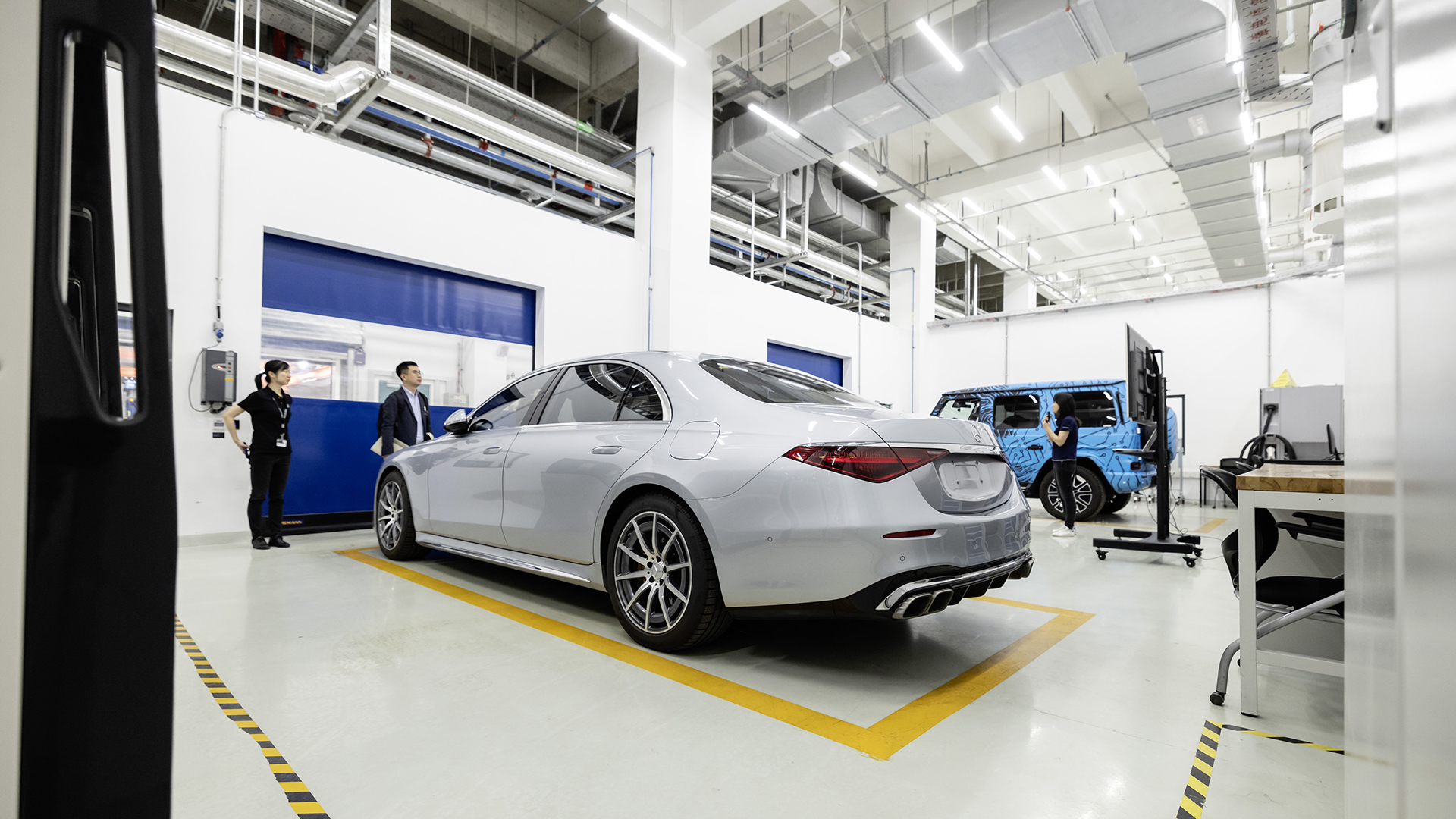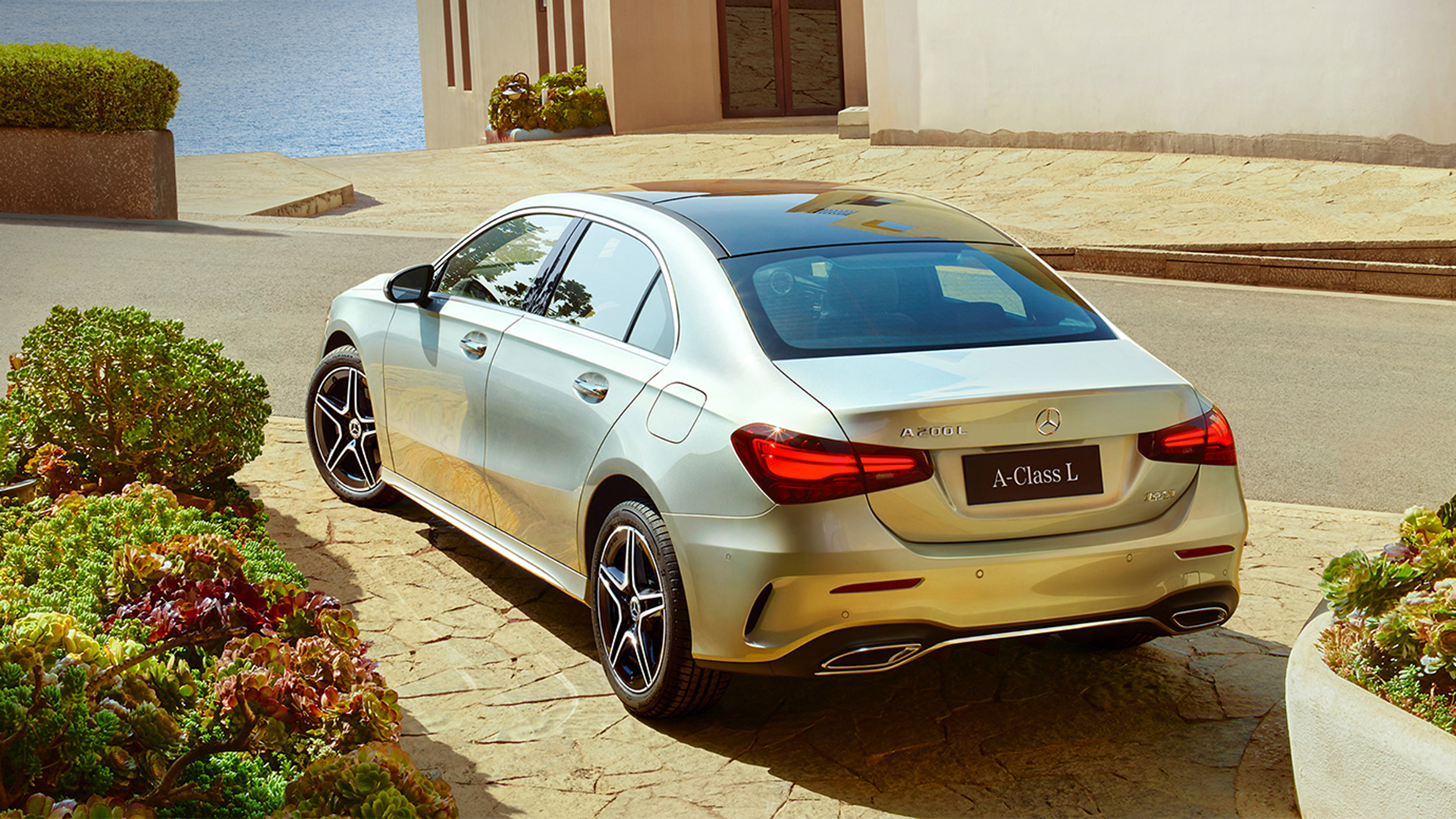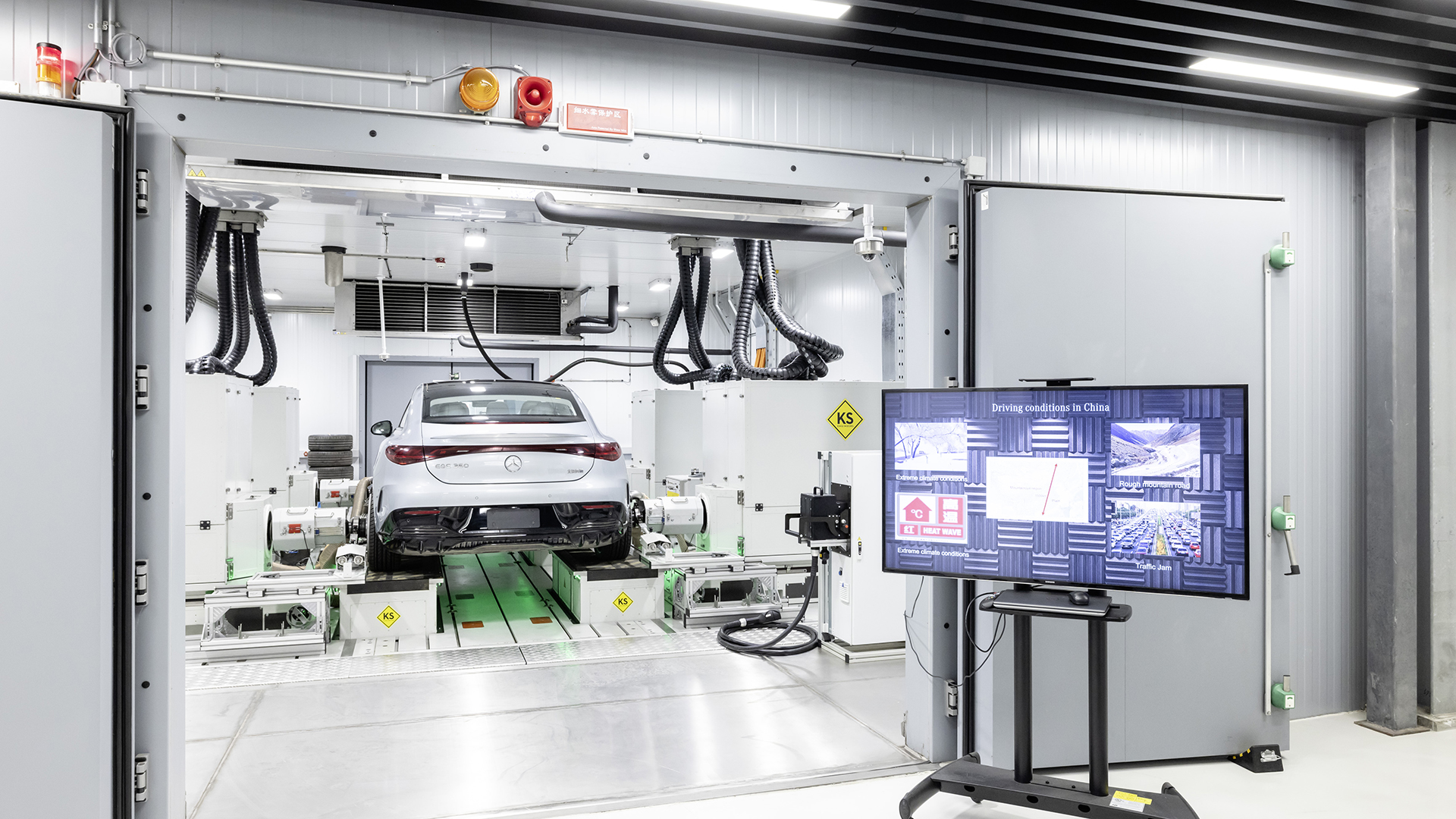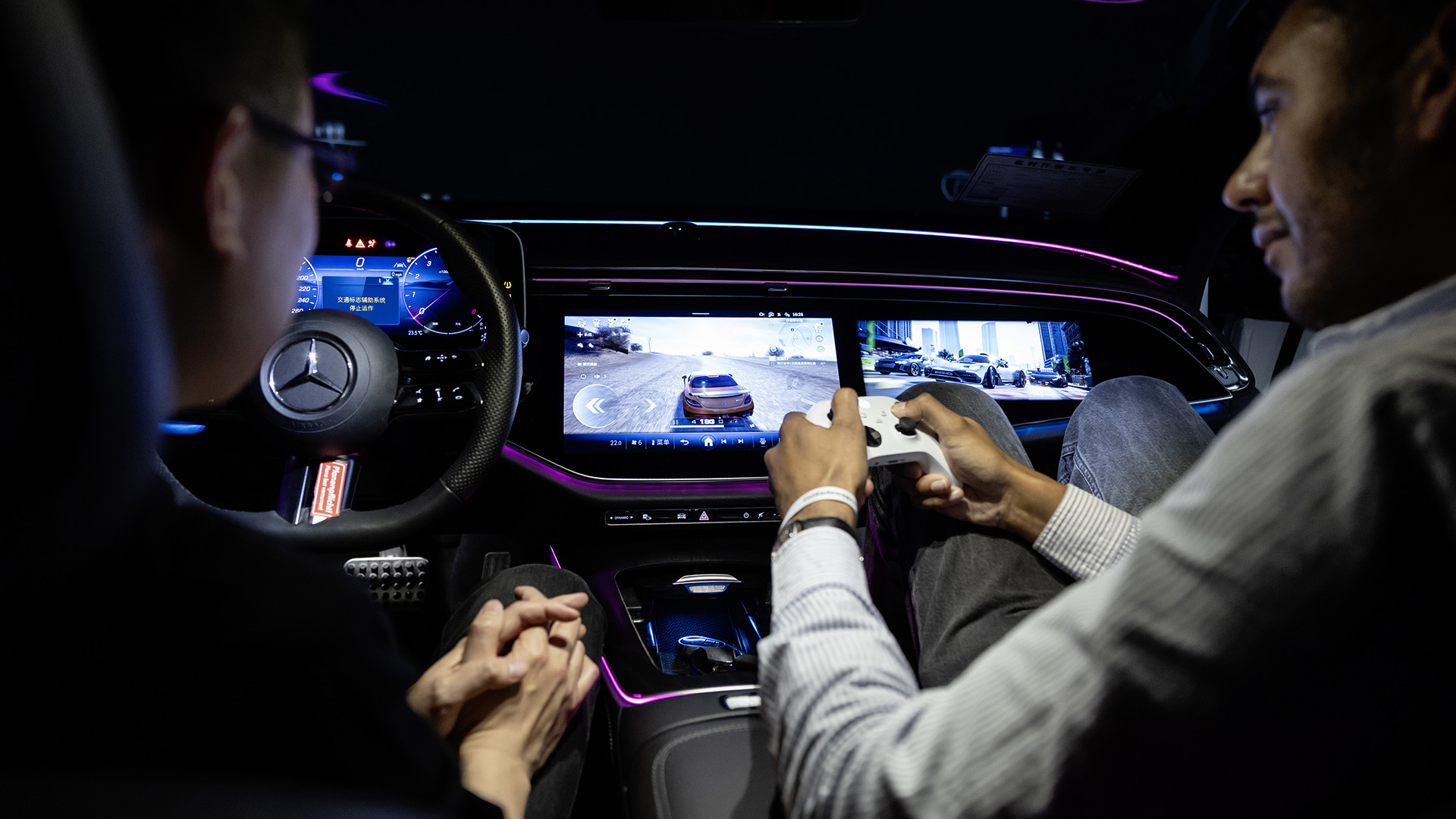These are Mercedes-Benz, but not as you know them
Thanks to local R&D, the Mercedes on the streets of China can be very different to those at home


In Europe and the US, the average number of passengers in most vehicles is 1.6 with the focus being on the driver – the person usually buying the car or leasing it. In many Asian countries though, that is not the case. Instead, the back seats can take priority.
For premium car buyers in China, having a driver to chauffeur you is far more common than in the West, so the buyer is likely to spend more time in the back seat than behind the wheel. Equally, that back seat is often where the grandparents sit, looking after the child, so giving them a comfy place to sit can still take priority for kinder sons and daughters when buying a new car.
With this in mind, there is one big difference in many of the Mercedes models in China, and that’s the length. Models such as the C-Class and E-Class are extended to a longer wheelbase to give that extra space in the back. There’s even a long-wheelbase A-Class in the range.

Mercedes-Benz A-Class Long-wheel-base
It’s not just space though. The rear seats typically have more features, such as electric seat adjustment, central armrests with phone and cup holders and electric rear blinds. The kind of features you’d expect to see on models like the S-Class.
To ensure that these longer Mercedes models still handle like their regular lengthed cousins, the R&D team at Mercedes Benz China, spend a great deal of time fine-tuning the designs to ensure that they remain quiet and comfortable to ride in. I got the chance to tour its facility just south of Beijing for a closer look into their work.

Mercedes China E-Drive lab
Fine-tuning
The Tech Centre China (TCC) is Mercedes’ biggest outside of Germany and opened in 2021. Positioned within the main complex which also houses the state-of-the-art Mercedes-Benz factory, it’s perfectly placed to work on pre-production versions of new cars and has access to the same test tracks as used in Germany.
Inside, the hanger-like lab is divided up into a series of separate rooms, all with doors large enough to drive a car into, and a modular floor structure which allows the equipment to be easily swapped in and out. There’s also a car-sized elevator, to take vehicles up to a second level above. All of this means that test vehicles can be very quickly driven into the facility.
Get all the latest news, reviews, deals and buying guides on gorgeous tech, home and active products from the T3 experts
The rooms are divided up into different test scenarios. There’s a chassis lab, an engine lab, an ADAS calibration lab and a noise/vibration/harshness lab. There’s also the only E-Drive lab outside of Germany for electric vehicle testing.

The noise/vibration/harshness lab
The E-Drive lab can simulate different road surfaces and climates to put the electric vehicles to the test and see how they perform – and how long that charge lasts. The runners around each wheel allow the smoothness of the surface to change and the incline to be varied. A large HVAC system varies the temperature to simulate extremes of weather.
In a special charging lab, the engineers can simulate a range of different AC and DC chargers and Wattage at different temperatures, to see how this affects the charging speed. The Chinese charging plugs are different to those in Europe and the US, with separate AC and DC sockets, so these require individual testing for the local models.
A completely soundproof room houses the noise, vibration and harshness testing lab. Here, multiple sensors are used to test road noise, interior noise and movement in the long-wheelbase Chinese versions of the cars. The goal is to make sure despite the additional weight and length, they are as quiet and comfortable (if not more so) than the standard models.

Entertainment and MBUX
The Mercedes-Benz MBUX entertainment system is regionalised to use the most relevant apps depending on the country. So, it’s no surprise that the version you see in China looks slightly different. From navigation and speech to entertainment and gaming, these systems use different services, and some of them look even better than what we’ve got in Europe.
Rather than a Google-based mapping system, navigation on Mercedes MBUX in China comes via Alibaba’s Amap. This system offers lots of rich content in the maps, including the ability to display the Level 2 driving features in the navigation, such as lane changing, due to the lane level navigation. The 3D map view actually uses the Unity game engine to provide lifelike features to the 3D maps, such as moving shadows on buildings, running water and moving grass in fields.
My favourite feature of this mapping is the inclusion of traffic light data – not only showing you when traffic lights are red or green on your journey, but having a countdown timer until they change. It’s something that requires some impressive cloud data but I’d love to see it in the UK.

Rear badging on Mercedes-Benz in China for Beijing Benz Automotive Company
The app ecosystem for entertainment is very different too. For movies and TV, there’s Tencent and Baidu’s iQIYI platform, while music and video are aggregated in an app called Vohico, alongside QQ Music and Ximalya apps.
Conversing in Mandarin Chinese requires a different speech dialogue tool too. This system provides natural language conversations with the option to forgo the wake word and just talk (as you can on UK models) and also cope with a double intent, asking for two functions at once. For instance, open the window and turn up the heating.
The AI-based service, Abacus, helps by offering content suggestions to the main screen, based on your previous actions. This means fewer clicks are needed to find some of the functions you use most when you need them.

Gaming
Perhaps the most impressive thing about the Chinese Mercedes-Benz models is a new feature coming later this year. You will soon be able to play a version of EA’s Need for Speed game on the car’s central display or passenger display, using a game controller.
Gaming options in Mercedes cars is nothing new, but this offering from Tencent and EA Games is certainly next-level. This will run on all third-generation MBUX systems and will come as an over-the-air update by the end of the year.
I gave the game a try in one of the demo vehicles at the Tech Centre China and found it really fun to play, delivering console-like quality. A future update could even allow you to control the game using the car’s steering wheel and pedals.

As T3's Editor-in-Chief, Mat Gallagher has his finger on the pulse for the latest advances in technology. He has written about technology since 2003 and after stints in Beijing, Hong Kong and Chicago is now based in the UK. He’s a true lover of gadgets, but especially anything that involves cameras, Apple, electric cars, musical instruments or travel.